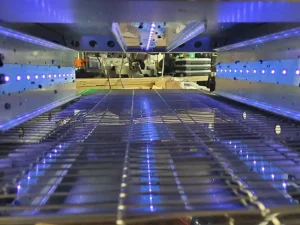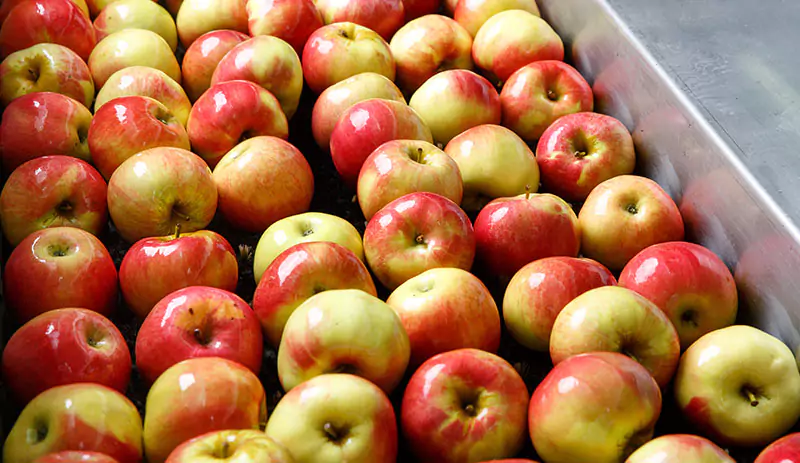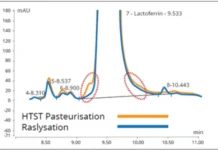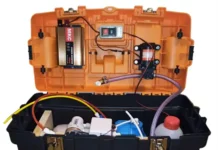IUVA Food and Beverage Safety Working Group
Dr. Danny Bayliss, Ph.D. New Technology Lead, Campden BRI
Peter E. Gordon VP of sales and marketing, Cudoform Inc.
Food manufacturers have their factories set up into different hygiene zones to help them protect the food products being produced from cross-contamination. Sometimes, protection mechanisms break down, barriers are breached, pathogenic bacteria are introduced, and a foodborne illness outbreak occurs.
The types and configurations of hygienic zones will depend on the products being produced, but they all will have low-risk areas of the factory where ingredients and production parts may come into the facility. These items either will pass into High Care if they have undergone a thermal process (Kill Step) at an external supplier or pass into High Risk if the thermal process (Kill Step) is part of the on-site process (e.g., cocktail sausage processing). Ideally, to prevent – but realistically to significantly limit – any possible contamination during handoffs, manufacturers will have in place physical barriers and controlled areas where items entering High Care are decontaminated as they enter. Each of these controlled entry points must undergo risk assessment to ensure the processes used are suitable for controlling cross-contamination (Reference: Section 8.1.3 of the BRCGS Global Standard for Food Safety, Issue 8) while maintaining food or packaging integrity.
Light at the End of the Tunnel – and in the Middle, and at the Entrance, Too

UV-C technologies – historically, UV-C lamps, and recently, UV-C LED-lined transfer tunnels – have demonstrated benefits for effective zonal transfer control for decontamination applications on packaged food items / ingredients, product packaging, equipment and utensils, and even the surface of food products like citrus fruit. The benefits this technology offers to the food industry include broad antimicrobial activity, no chemical residues, dry treatment methods and that it is nonthermal. Additionally, plant and worker safety is enhanced since there is less need to store hazardous materials. Protecting workers from accidental UV-C exposure is a relatively simple design feature of containing the effective UV-C solely within the active sections of the UV-C tunnel, resulting in the shielding of processing area occupants from the germicidal UV.
The design of the active sections of the equipment is determined by which products will be moved through the system, as this will influence the belt design as well as the supporting structures and the height of emitters. Multiple items of different sizes that are passed through one line will result in the belt speed being set for the item furthest away from the lamps (lowest light intensity) for the same target dose. Heavy items may need stronger support structures, so the positioning of the lamps to maximize surface exposure from underneath the item is important. If the item is on a wire belt, then there are areas which are on the wire and protected from the UV-C, so the item needs to be moved during exposure and worst-case microbial reduction analysis must be undertaken.
Other ways to maximize the exposure, if the design allows, would be to have the lamps perpendicular to the traveling direction of the belt and limiting the belt support structures in this area. If the application permits, then transferring the product or packaged item on rollers is another way to maximize exposure. Between each roller, the UV-C lamps or LEDs can be positioned so the UV-C is not impeded. This is imperative to prevent any belt supports from reducing the overall delivered dose in the tunnel. This is not practical in all situations or all types of products. The key for all manufacturers is to identify the low-dose sections of the tunnels for the intended items and validate the process with the relevant microbial species and achievable dosages in consideration of that limitation.
Not Limited by Tunnel Vision
The fastest-growing application area of UV-C processing is for packaging decontamination. While the obvious application of UV-C is to decontaminate packaging prior to being used – to contain or store a product in medium-risk areas – there is a desire to widen the field of view and apply UV-C tunnels to decontaminate packaged items entering high-risk zones. Food processors now are beginning to see beyond the traditional utilization, envisioning new ways to deploy germicidal light. For example, historically, the outer packaging would be decontaminated using chemical spray tunnels. However, UV-C offers an alternative approach to dependence on chemical spray tunnels. Manufacturers now can focus on reducing their water and chemical use (and hazardous chemical storage) in a factory – driving sustainability – and the treated item does not need further drying – saving time – with the added benefits of improving a manufacturer’s margin of safety, offering better utilization of expensive floor space and lowering operating expense costs.
In some countries, there may be specific restrictions on which food products and packaging can be treated with UV-C. However, in the United Kingdom and parts of Europe, there are many applications of the technology on food products in trials, including fresh fruits and vegetables as well as baked goods, and food technologists have their sights set on other unexplored application vistas.
The IUVA Food and Beverage Safety Working Group explores the latest updates on the science-based validation and commercialization of UV-C technology for plant growth stimulation or suppression, nutrition enhancement, fungicide and pesticide reduction, wash water sanitation and postharvest disinfection, as well as use for nonthermal, low UVT beverage treatment.
Contact: Dr. Danny Bayliss, [email protected]; Peter E. Gordon, [email protected]





